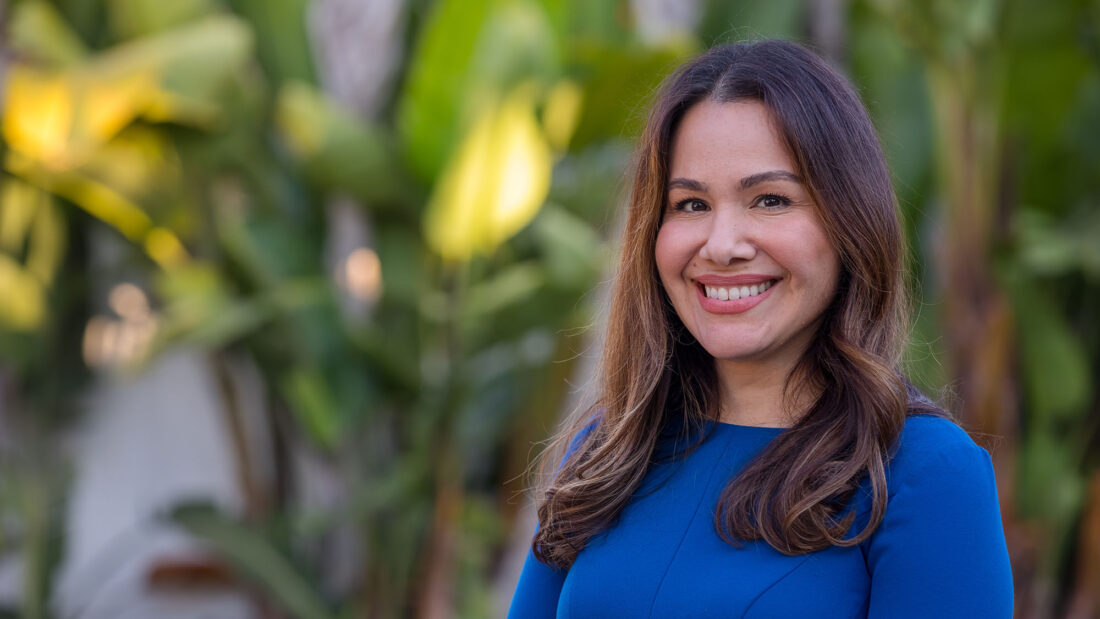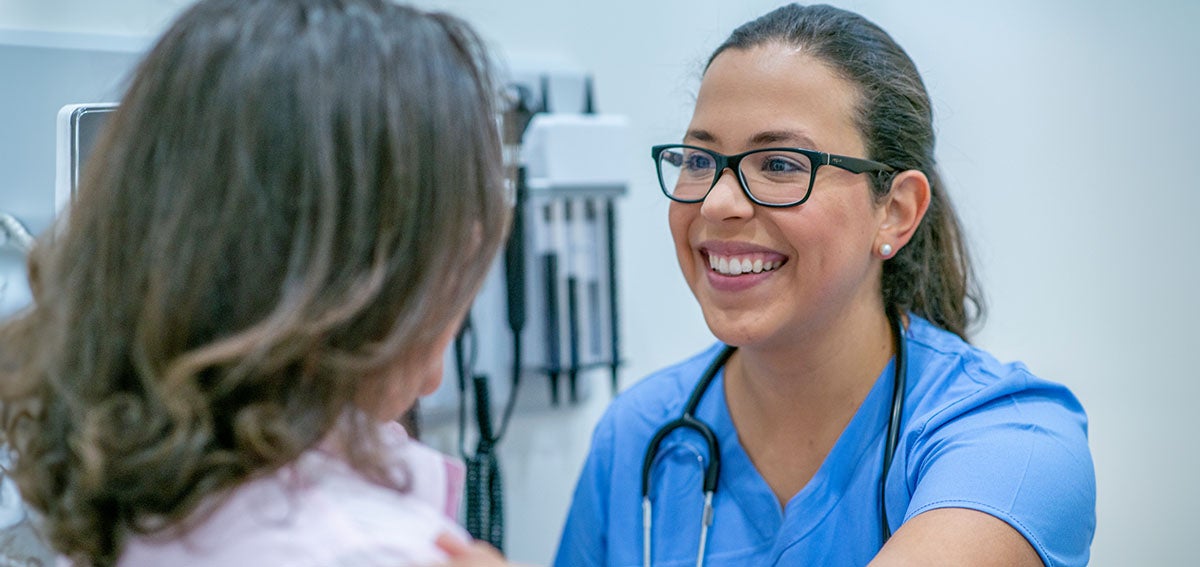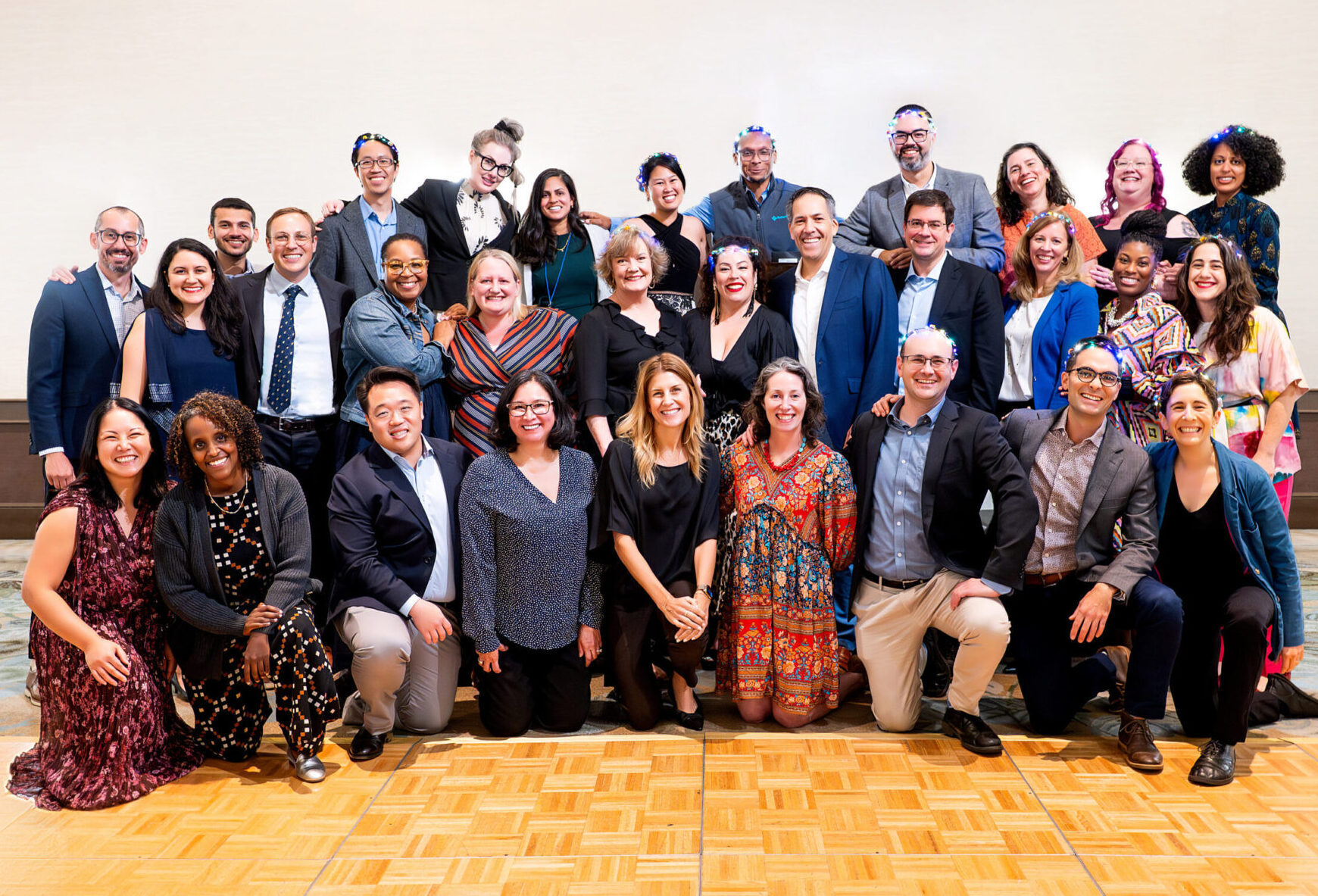
Community health workers, promotores, and community health representatives (CHWPRs) are a vital component of California’s health workforce. From helping community members navigate their Medi-Cal benefits to assisting with medication management, these trained professionals provide culturally concordant health services, referrals, and information in patients’ preferred languages. And because they are trusted members of the communities they serve, CHWPRs are uniquely positioned to bridge the gaps between historically underserved groups and the larger health care system.
To maximize the impact of this workforce, advocates and policymakers are exploring ways to better integrate these workers into care delivery systems, including through a Medi-Cal benefit that covers community health worker services. I recently spoke with Mayra E. Alvarez, MHA, president of The Children’s Partnership, a nonprofit advocacy organization, to better understand the role that community health workers play in advancing equitable care and to learn what changes are needed to make support for their work sustainable.
Alvarez helped to advocate for community health workers to be designated as a federally sanctioned workforce when she was a federal health official and has continued to advocate for them in California. The Children’s Partnership has published several papers on the subject and is a founding steering committee member of the Community Health Workers, Promotoras, and Representatives Coalition.
Our conversation has been edited and condensed for clarity and length.
Q: What makes community health workers, promotores, and representatives so effective?
A: Because they work in the community that they come from, they have a close, personal, intimate understanding of the people they serve through that shared experience, whether it’s their culture, their language, their ethnicity, or their life experiences. They have a trusting relationship with the community they serve, and that really gives community health workers and promotores their magic.
Community health workers and promotores are an under-appreciated gift to the health care system. They’re out in the community — in people’s homes, at parks, in barbershops, at schools — and not within the walls of the traditional health care system.
They are unacknowledged frontline workers who, during any disaster, act without waiting for a funding source or a directive. During the pandemic, it was promotores who were able to help people of different cultures understand the vaccine or what it means to isolate. They were able to answer questions and help dissipate fear. It was community health workers that were walking people to vaccine clinics to ensure that more people actually utilize the vaccine, particularly in communities of color.
Many community health workers got into this type of work because they were the trusted person in their circle whom people went to for advice, or they were the community leader from whom people sought guidance. They already had that trust. This distinguishes them from other members of the community-connected workforce like peer support specialists, who help clients navigate recovery by drawing on their own lived experience with mental illness or substance use disorder.
Community health workers meet people where they are, in the language of the community they serve. Whether it’s in Spanish or Tagalog or Farsi, being able to navigate these complicated terms alongside someone who speaks your language is incredibly helpful.
Mayra E. Alvarez
Q: What are the typical services provided by community health workers, promotores, and representatives?
A: Fundamentally, they help people navigate the health care system. This can involve answering questions, pointing people in the right direction for services, helping them communicate with medical professionals, navigating an application system, or accessing social services or housing supports. Their training helps them understand the system in ways that the people they serve do not.
Community health workers also help with treatment and care. For instance, they can help someone adhere to medication instructions or follow a treatment plan. And because everyone’s needs are different, community health workers meet people where they are. Plus, they do all of this in the language of the community they serve. Whether it’s in Spanish or Tagalog or Farsi, being able to navigate these complicated terms alongside someone who speaks your language is incredibly helpful.
Certification Plan Flexibility Needed
Q: The state started the process of establishing a process to certify community health workers for reimbursement by Medi-Cal. Where do things stand with that?
A: Based on feedback from community health workers and promotores, the state chose not to proceed with a proposed program that could have hurt the workforce we are trying to support.
The idea behind certification was to ensure community health workers have the necessary skills to serve people. And while that is a logical aim, what was lost in the process were the voices of community health workers. Right now, as we seek to maximize this opportunity, we are trying to make them part of the system. But in doing so, we want to be careful that we’re not destroying the very elements that make community health workers as powerful as they are.
One of those elements is flexibility. To meet the needs of their community, community health workers meet people at various times of day and for varying lengths of time. That is very different from our health care system, where you get 15 minutes to meet with your medical professional. That’s because CHWPRs aren’t crunching numbers. They’re trying to connect with people and build trust.
The essence of community health workers or promotores is grounded in the fact that they operate outside of the system they help to navigate. As we have sought to professionalize this incredibly important workforce, there are some missteps that we have taken, and that’s understandable. We are taking risks as a state to change our health care system. We’re not going to get everything right on the first try.
Q: What new directions are being taken?
A: The California Department of Health Care Services (DHCS), advocates, and the California Department of Health Care Access and Information (HCAI) are discussing alternative solutions — everything from supporting community colleges with developing training programs to providing guidance to employers. There’s no one-size-fits-all approach to community health workers and promotores because of the diversity of the workforce, which is valuable in and of itself.
The conversation is continuing, and the enthusiasm for better incorporating community health workers into our care delivery system has not waned. I’m excited to see what’s to come with more community health workers and promotores at the table.
Building on What Is Working
Q: The CHWPR benefit under Medi-Cal looks very promising. What are you seeing on the ground?
A: When this benefit was enacted in 2022, we were so excited. This department was pushing the envelope, trying to do things differently in our Medi-Cal program. They had been listening to what advocates had been saying for decades about how Medi-Cal can help deliver care more effectively and in a more culturally responsive way.
We should be looking at where the benefit is working and asking how we can build on that. The willingness of the workforce to develop a viable solution is there.
Mayra E. Alvarez
It was an ambitious implementation timeline. We knew there would be some hiccups. However, in being so excited about implementing this benefit, we missed the opportunity to set up an infrastructure to make it workable. Utilization of the benefit has been low for a number of reasons — the most important of which is that community health workers have traditionally not been part of the system that they are expected to quickly and seamlessly join. Plus, community health workers are employed by local organizations that often have neither the knowledge nor capacity to bill Medi-Cal for CHWPR services. The billing system, which distributes payments for half-hour visits, does not reflect how community health workers do their jobs. But slow uptake doesn’t mean that that people don’t want the benefit. It means there is insufficient capacity to properly bill.
Instead of operating as a top-down system, we need to center the workers and the communities that we seek to serve. We should also be looking at where the benefit is working and asking how we can build on that. The willingness of the workforce to develop a viable solution is there, and the state continues to point to community health workers and promotores as a core element of their improvements in Medi-Cal delivery. We need to make sure we are learning from where the benefit is working and taking those lessons to improve integration process moving forward.
Needed: A Thriving Wage
Q: How has the community health worker movement advocated better policies for the workforce?
A: The Children’s Partnership is very proud to be part of the CHWPR coalition, which is working toward improving the conditions in which we employ, utilize, and expand that workforce in California. An important goal of this coalition is to create accountability for equitable access to the wide range of services community health works provide, from education and outreach to care coordination, medication adherence, and navigation.
Over the past year, we sought to advance legislation that would require DHCS to collect and report data on workforce utilization and reimbursement to more effectively show how this benefit is or isn’t being utilized, and by whom. Not getting it perfectly right the first time is understandable. Anything worth doing is going to be a challenge, but if we’re not able to capture data and tell that story, then we can’t get better.
We are also continuing to advocate for increased reimbursement and better wages. As a colleague once told me, “Yes, promotores have hearts, but they also have stomachs to feed,” meaning that despite serving others, community health workers do not make a sustainable living. There is racism baked into believing that community health workers are not as valuable as medical professionals, even though their role and added value is completely different. I’m not saying we must pay promotores the same way we pay doctors, but we owe them a thriving wage for the essential services that they provide.
Q: Have there been any recent policy shifts around the CHWPR benefit?
A: Mirroring a recommendation made for doulas, DHCS and HCAI issued a standing recommendation earlier this year removing the requirement for a physician referral to access CHW services. This means that now, patients can themselves decide to access these services, and it shows that DHCS recognizes how important this service is and that there is strong support from the administration for community health workers.
Listening to Community Health Workers
Q: What additional steps are needed to ensure that community health workers are integrated into Medi-Cal and supported in the long term?
From a workforce and training perspective, HCAI has made important investments in the organizations that employ community health workers. These organizations have limited capacity to build new relationships, and we can’t just expect these very different elements of care to work together without support. It requires additional investment, and I hope we can sustain those programs for the future. And this is important: we need to center the voices of community health workers in the planning of what this benefit ultimately will look like.
Q: What makes these workers such essential frontline leaders in this moment?
A: We’re living in an emergency with immigrant communities, trans communities, low-income families, and families of color under attack. Again, our community health workers and promotores are helping people navigate this time. Wisdom, trust, and leadership from the community are necessary to get us through challenging episodes, and we owe a great debt to community health workers and promotores.
Authors & Contributors


David Poller
Independent Photojournalist
David Poller is a photo editor for The New York Times and has worked for many years as a newspaper and wire service photojournalist. He shoots editorial and commercial assignments in Southern California.





